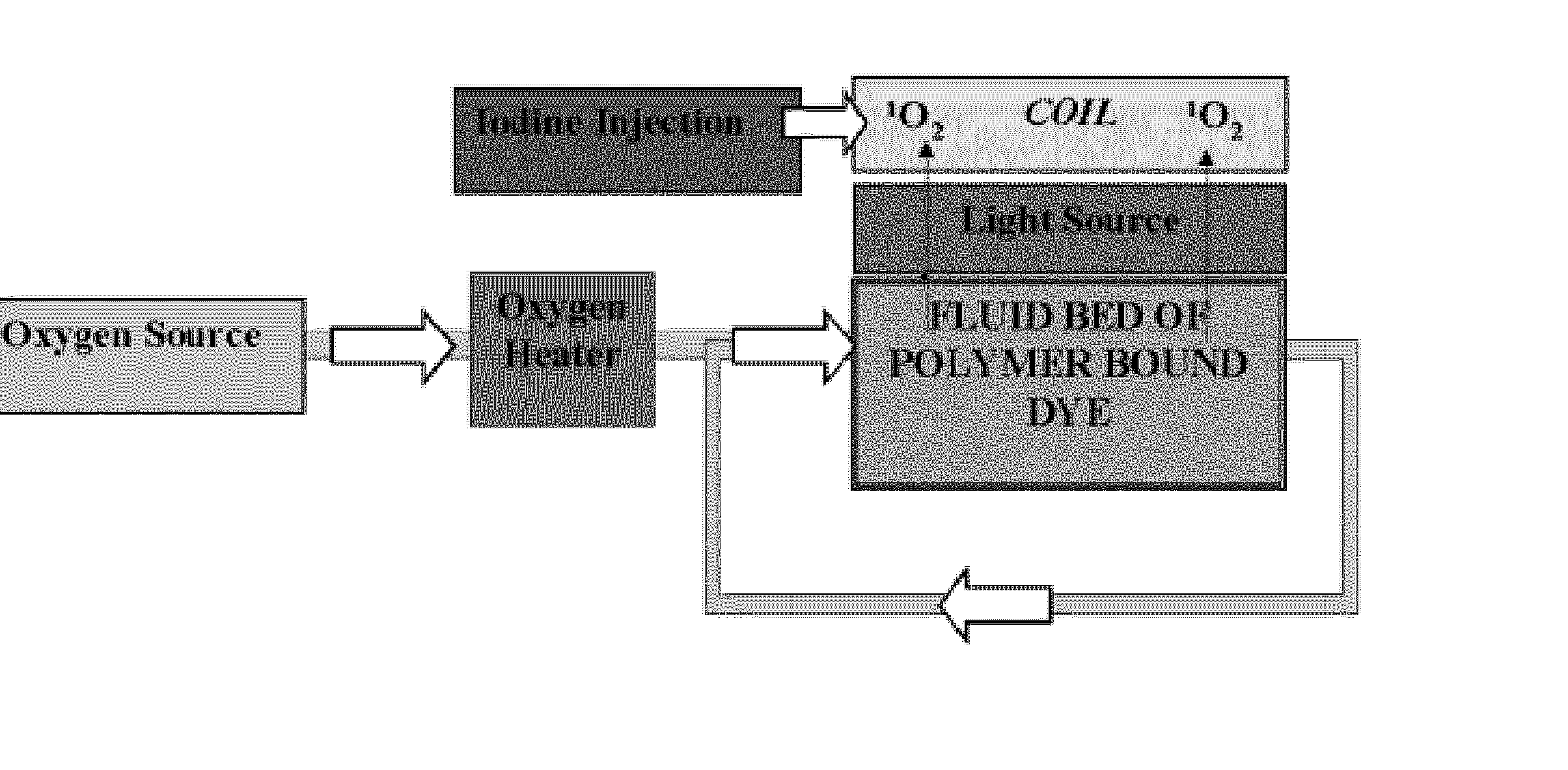Irradiated fluid bed reactor
a technology of fluid bed reactor and irradiation, which is applied in the direction of oxygen preparation, chemical/physical/physical-chemical processes, energy-based chemical/physical/physical-chemical processes, etc., can solve the problem of flight charge engendering a weight penalty on the airframe, no provision for compatible selection or emission within circulating media,
- Summary
- Abstract
- Description
- Claims
- Application Information
AI Technical Summary
Benefits of technology
Problems solved by technology
Method used
Image
Examples
Embodiment Construction
[0033]FIG. 1 shows a variation on a classic method of generation of singlet oxygen by dye-sensitized photolysis. Very briefly, a dye molecule absorbs a quantum of visible light, then transfers that energy to an oxygen molecule. The oxygen is thus promoted to its first excited state: singlet molecular oxygen.
[0034] This reaction has not been done totally in the gas phase. Classically, the dye and the reaction substrate are dissolved in an appropriate solvent, oxygen is sparged through the solution, and the whole is irradiated with a strong visible light source. It is to be expected that only a small portion of the oxygen is available for reaction as singlet molecular oxygen. There are several reasons for the low yield. Since the singlet molecular oxygen is generated in the condensed phase, deactivation by solvent is an important process. Additionally, there is limited contact between the excited dye and the oxygen—only on the surface of the bubbles. Finally, it seems that the energ...
PUM
| Property | Measurement | Unit |
|---|---|---|
| pressure | aaaaa | aaaaa |
| pressure | aaaaa | aaaaa |
| energy | aaaaa | aaaaa |
Abstract
Description
Claims
Application Information
 Login to View More
Login to View More - R&D
- Intellectual Property
- Life Sciences
- Materials
- Tech Scout
- Unparalleled Data Quality
- Higher Quality Content
- 60% Fewer Hallucinations
Browse by: Latest US Patents, China's latest patents, Technical Efficacy Thesaurus, Application Domain, Technology Topic, Popular Technical Reports.
© 2025 PatSnap. All rights reserved.Legal|Privacy policy|Modern Slavery Act Transparency Statement|Sitemap|About US| Contact US: help@patsnap.com



